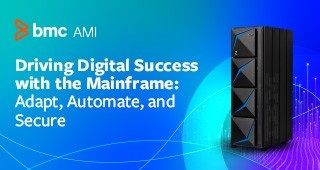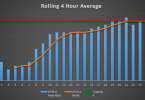
January 2018 will be here before you know it and that means two things:
- Monthly License Charge (MLC) costs from IBM for products such as IBM DB2, IMS, CICS and MQ will be going up again and these costs represent a major part of your mainframe budget.
- It’s a good time to think about how to save money with a Monthly License Charge (MLC) Cost “Diet Plan” based on intelligent capping and mainframe automation.
It all adds up
You’re charged MLC costs based on the peak 4-hour rolling average (4HRA) costs in a month, instead of the actual amount of resources the software consumes. By using these resources more efficiently, you can reduce these costs and still meet the growing demands of digital business.
Keep this in mind: lowering your MLC costs is like a going on a diet that identifies the best times to eat certain foods in order to lose weight and the amount of food that you should consume at those times to boost your metabolism. It’s about having a plan and setting limits. Intelligent capping can do this for the mainframe and make this whole cost reduction experience for your z/OS software not only palatable, but also more efficient, easy, and rewarding. You can satisfy your cravings for savings without sacrificing performance.
The power of intelligent capping
One of the best ways to reduce MLC costs is to use intelligent capping and modeling that’s built on the centralized architecture of BMC’s MainView. Although you may have tried defining capacity or group capping to help reduce costs, there’s more you can do to save and also find out what’s happening with the capping on a minute-by-minute basis. That’s where intelligent capping (iCap) can make a big difference.
Here are 4 ways that iCap can help you gain greater visibility, model changes, make adjustments, and reduce costs:
- Awareness and prioritization: iCap is aware of all logical partitions (LPARs) and WLMs. If an LPAR has a defined capacity, iCap can use a similar weight in adjusting and determining the priority for capping for a given LPAR to reduce peak costs. If your WLM settings were set up many years ago, they probably need to be adjusted.
- Small LPAR capping capabilities: You can cap small, critical LPARs, such as one with a MSU limit of 20. Once the limit has been reached, and there is nothing that can be capped, you can use a smart alarm to indicate that the MSU limit is at 55% for example, and then have automation kick in to increase the MSU limit until it catches up to the 4HRA.
- 3 modes to ease into capping: iCap has 3 modes based on your comfort zone: observe, message, and manage.
- In the observe mode, iCap will look at what’s going on and collect data on 4HRA, active LPARs, and groups, but it won’t change anything.
- The message mode is a little more aggressive. A policy is required and you can see the cause-and-effect relationship of what’s happening between the WLM data and the 4HRA, and decisions are logged.
- In the manage mode, iCap applies the selected policy. That is, the product actively manages defined capacities (DCs) and general capacity limits (GCL) for LPARs and capacity groups defined in the policy, and ensures that their sum doesn’t not exceed the MSU limit.
- Modeling: You can model changes and use a cost analysis solution to determine how much money you could save if you cap a specific LPAR at that given rate. With modeling, it’s good to enter at least one month’s worth of data as your entry point because you’re going to hit the R4HA in a month. Knowing where that is becomes the data point to lowering the 4HRA and starting to save money.
Get your MLC costs in better shape. Learn more about how to reduce MLC costs with iCap.





